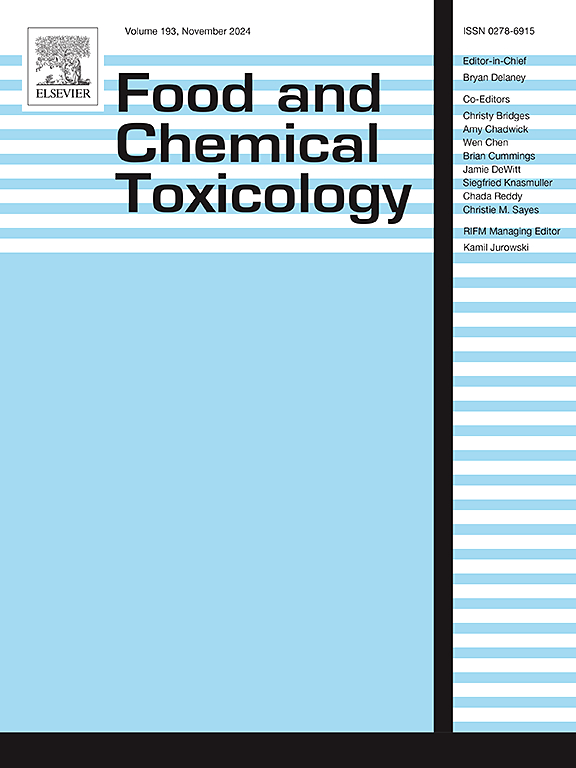A 13-week repeated oral dose toxicity evaluation and a 4-week recovery evaluation of rosemary concentrate containing 50% ursolic acid in male and female rats
IF 3.9
3区 医学
Q2 FOOD SCIENCE & TECHNOLOGY
引用次数: 0
Abstract
This study was performed to evaluate the safety of rosemary concentrate containing 50% ursolic acid (RCUA50), the ethanolic extract of rosemary. RCUA50 was administered orally for 13 weeks at 1000, 2000, and 4000 mg/kg/day, and then the rats were maintained for 4 weeks without RCUA50 administration for recovery evaluation. We observed clinical signs, body weights, food consumption, functional observations, ophthalmological examination, urinalysis, estrus cycle, hematology, clinical chemistry, sperm analysis, organ weights, gross examination, and histopathological examinations. During the dosing and recovery period, there were no test substance-related deaths, clinical signs, changes in body weights, and food consumption in all treated groups. In the main group, there were no test substance-related effects in functional observations and ophthalmological examination. In the main and recovery groups, there were no test substance-related effects in hematology, clinical chemistry, sperm analysis, organ weights, necropsy and histopathological examination. In conclusion, the repeated oral administration of RCUA50 for 13 weeks resulted in no test substance-related adverse effect at all dose levels. Therefore, the NOAEL was considered to be greater than 4000 mg/kg/day in both sexes under the conditions of this study.

求助全文
约1分钟内获得全文
求助全文
来源期刊

Food and Chemical Toxicology
工程技术-毒理学
CiteScore
10.90
自引率
4.70%
发文量
651
审稿时长
31 days
期刊介绍:
Food and Chemical Toxicology (FCT), an internationally renowned journal, that publishes original research articles and reviews on toxic effects, in animals and humans, of natural or synthetic chemicals occurring in the human environment with particular emphasis on food, drugs, and chemicals, including agricultural and industrial safety, and consumer product safety. Areas such as safety evaluation of novel foods and ingredients, biotechnologically-derived products, and nanomaterials are included in the scope of the journal. FCT also encourages submission of papers on inter-relationships between nutrition and toxicology and on in vitro techniques, particularly those fostering the 3 Rs.
The principal aim of the journal is to publish high impact, scholarly work and to serve as a multidisciplinary forum for research in toxicology. Papers submitted will be judged on the basis of scientific originality and contribution to the field, quality and subject matter. Studies should address at least one of the following:
-Adverse physiological/biochemical, or pathological changes induced by specific defined substances
-New techniques for assessing potential toxicity, including molecular biology
-Mechanisms underlying toxic phenomena
-Toxicological examinations of specific chemicals or consumer products, both those showing adverse effects and those demonstrating safety, that meet current standards of scientific acceptability.
Authors must clearly and briefly identify what novel toxic effect (s) or toxic mechanism (s) of the chemical are being reported and what their significance is in the abstract. Furthermore, sufficient doses should be included in order to provide information on NOAEL/LOAEL values.
 求助内容:
求助内容: 应助结果提醒方式:
应助结果提醒方式:


